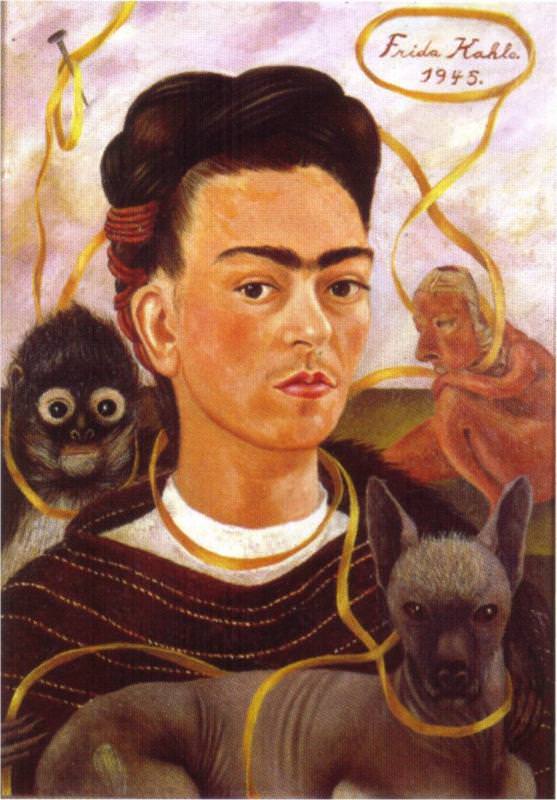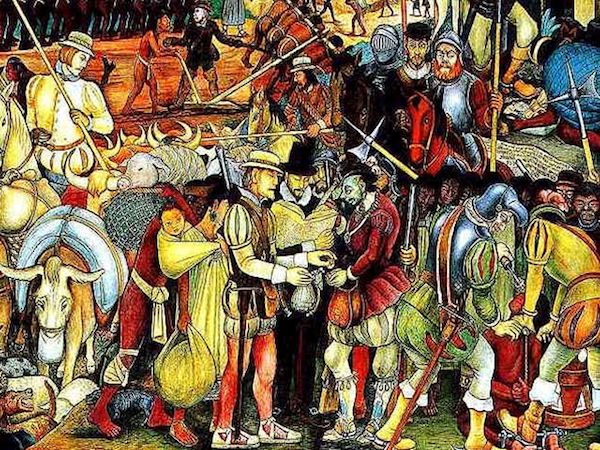
Art is not just an insightful expression of the artist, but also an insight into time.
Depictions of dogs go back thousands of years to when images of dogs were quite literally scratched into cave walls during the Bronze Age. In time, they would be portrayed on urns, appear as sculptures, and have their portraits painted, sometimes with their owners, and sometimes by themselves. These old paintings are a boon to cynologists and amateur breed experts curious about how a breed has changed over time, if at all. How dogs are depicted show the rest of us what society, their owner, or even the artist felt about their place in the world.
Mexican artist, Frida Kahlo, painted fifty-five self portraits, and several of them included the artist with monkeys or parrots. In the piece seen here, “Self Portrait with Changuito” painted in 1945, Kahlo has included her dog and a monkey, or changuito, and what is interesting about this piece is the “equal footing” she gives her animals. Each is staring out at the viewer, and given their placement on the canvas, each has value. She is connected to them, and they to her, and we know this from the yellow ribbon that weaves them – and her signature at the top right corner – together.
The dog, as Xolo owners know, is a Xoloitzcuintli, a breed that Frida Kahlo, and her on-and-off-again husband, muralist, Diego Rivera, raised in their shared homes. Kahlo’s first, and favorite dog, was named, “Señor Xototl,” and he often appeared in paintings about death and divinity. Diego Rivera also incorporated the breed mostly famously in an important mural in Mexico City’s National Palace in which a Xolo is baring its teeth at the invading Spaniards as they arrived in Vera Cruz. For him, the Xolo was a symbol of national pride. Can you find the Xolo in the mural?
Art. A fascinating insight into purebred dogs, their place in history, and in the lives of the artists. And in case you didn’t see the Xolo in Rivera’s mural, it is in the very bottom left-hand corner.

